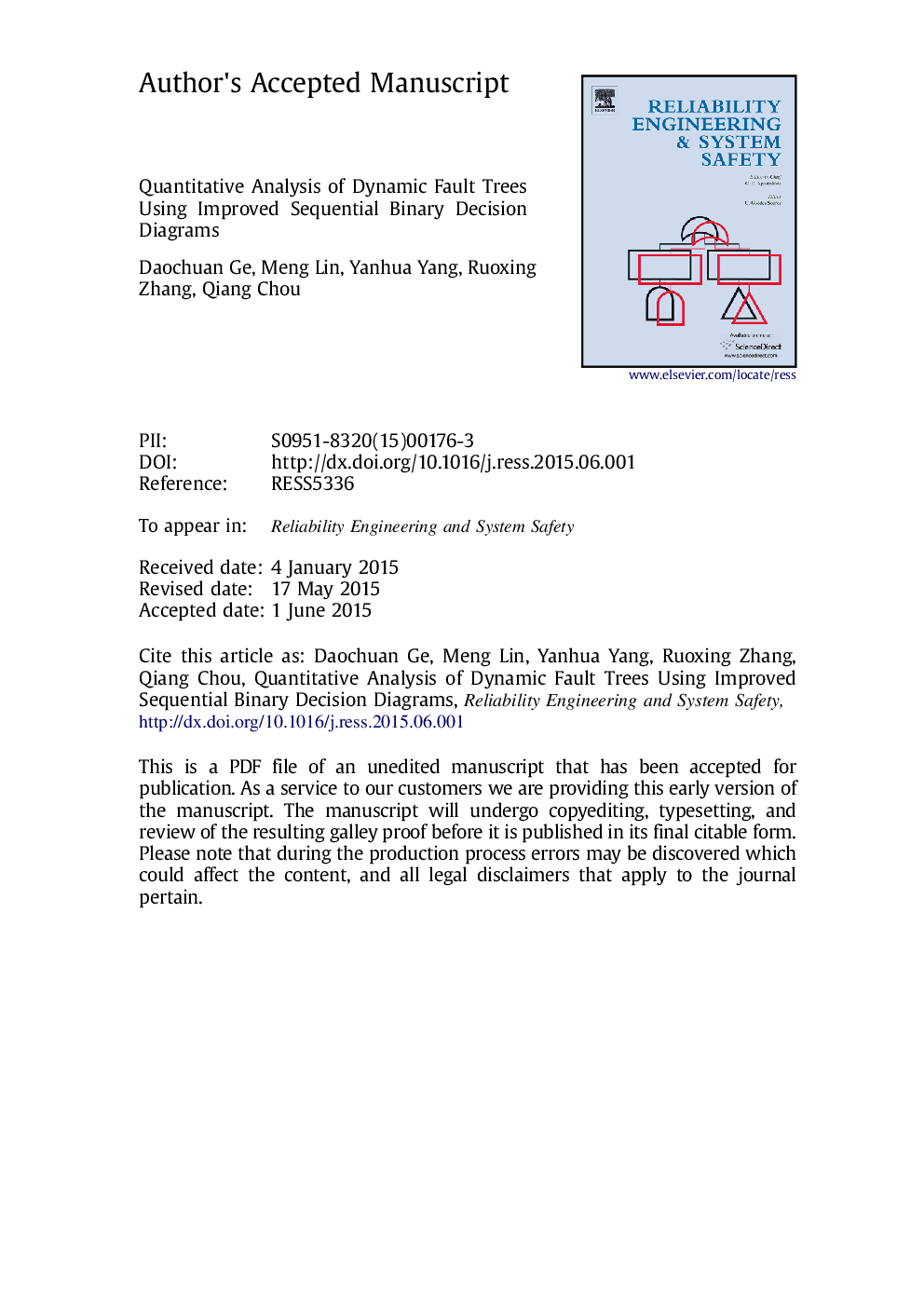| Article ID | Journal | Published Year | Pages | File Type |
|---|---|---|---|---|
| 7195552 | Reliability Engineering & System Safety | 2015 | 26 Pages |
Abstract
Dynamic fault trees (DFTs) are powerful in modeling systems with sequence- and function dependent failure behaviors. The key point lies in how to quantify complex DFTs analytically and efficiently. Unfortunately, the existing methods for analyzing DFTs all have their own disadvantages. They either suffer from the problem of combinatorial explosion or need a long computation time to obtain an accurate solution. Sequential Binary Decision Diagrams (SBDDs) are regarded as novel and efficient approaches to deal with DFTs, but their two apparent shortcomings remain to be handled: That is, SBDDs probably generate invalid nodes when given an unpleasant variable index and the scale of the resultant cut sequences greatly relies on the chosen variable index. An improved SBDD method is proposed in this paper to deal with the two mentioned problems. It uses an improved ite (If-Then-Else) algorithm to avoid generating invalid nodes when building SBDDs, and a heuristic variable index to keep the scale of resultant cut sequences as small as possible. To confirm the applicability and merits of the proposed method, several benchmark examples are demonstrated, and the results indicate this approach is efficient as well as reasonable.
Related Topics
Physical Sciences and Engineering
Engineering
Mechanical Engineering
Authors
Daochuan Ge, Meng Lin, Yanhua Yang, Ruoxing Zhang, Qiang Chou,
